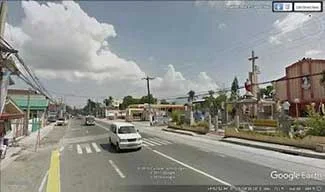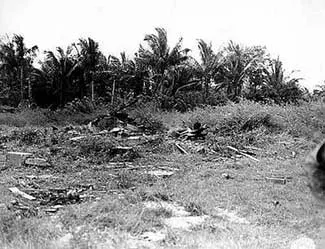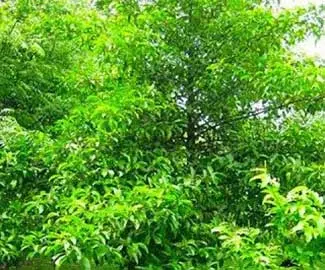Malvar: Historical and Folkloric Notes about some of its Barrios
This article is the latest installment of a series dedicated to featuring otherwise forgotten historic and folkloric information about the barrios of Batangas. This time we focus on the town of Malvar, which until 1919 was part of the then-town of Lipa.
The information contained in this article about each barrio was taken from documents required in 1951 by then-President Elpidio Quirino of all Department of Education districts around the country to reconstruct local histories after many books were destroyed in World War II. These archives are presently archived at the National Library of the Philippines Digital Collections.
Not all barrios are represented in this article. It is possible that some present-day barrios were still part of other barrios back in 1953, when the documents were submitted. It is also possible that no documents were submitted for some barrios; and if there were, that these became worn out over time.
Bagong Pook
Barrio Bagong Pook was so named because it was formerly part of Barrio San Fernando but was formally established as a distinct barrio in January of 1930. The land in the barrio used to be owned by some rich families of the then-town of Lipa. The first families to settle the place were those of Eleuterio Manalo and Isabelo Reaño. Other families soon followed to cultivate the land.
During World War II, Japanese soldiers frequently raided the barrio, killing its inhabitants and destroying their properties. This forced many of the barrio’s people to evacuate to places not known to the Japanese Army. Reconstruction began soon after the country was liberated by the Allied forces. In Bagong Pook, schools were built and houses improved.
Source: Collection and Compilation of Historical Data, Barrio of Bagong Pook
San Andres
San Andres’ old name was Calicangan, supposed to be from “calicanto,” a meeting place between two points in an area or territory. Its new name San Andres was supposed to have been derived from the name of one Andalicio Llanes, who “died with a noble act and feeling and a desire to make his place a progressive one.” This story does sound a tad quirky and for all we know, the barrio was named after the saint of the same name.
At any rate, the barrio was initially settled by the families of the same Andalicio Llanes, Andres Llanes, Adriano Mendoza, Eugenio Magabo, Tomas Rocapor, Rafael Latayan, Pedro Valencia and Leon Evangelista. In World War II, 44 of the barrio’s inhabitants were massacred by Japanese soldiers. Properties were also destroyed. Immediately after liberation, barrio folks who had evacuated to escape Japanese atrocities returned to their homes to begin the task of rehabilitation.
Source: Collection and Compilation of Historical Data, Barrio of San Andres
San Isidro
Barrio San Isidro, which was established on the first of January in the year 1919, used to be called Bilukaw, after “a big bilukaw tree that grew in the barrio1.” When Luta separated from the town of Lipa to become the new Municipality of Malvar, the barrio’s name was changed to San Isidro. The barrio’s original settlers were the families of Vicente del Mundo, Juan del Mundo, Bernando Mendoza, Claro de Chavez, Monico Mendoza, Honorio de Leon, Isidro Lat and Juan de Torres.
Source: Collection and Compilation of Historical Data, Barrio of San Isidro
San Juan
Barrio San Juan was established in 1919 and used to be known as Ibayo. Its original families were the Malabanans, Olanos, Mitras, Taclas, Cuencas, Kalalos, de la Peñas and Linatocs. Right after World War II, the Parents-Teachers Association School Building was constructed, likely part of the rehabilitation undertaken nationwide when hostilities were concluded. In 1951, the barrio was organized into smaller geopolitical subdivisions called puroks. (Unfortunately, information from the document on San Juan was very scanty.)
Source: Collection and Compilation of Historical Data, Barrio of San Juan
San Pedro
This barrio used to be called Muzon, like the one in Alitagtag derived from “mojon,” the rocks used to designate territorial boundaries. The barrio was so-named because it used to be the boundary between the towns of Lipa and Tanauan. Its present name San Pedro was the name of just one of the barrio’s sitios. The barrio’s original settlers were the Uneras, Toresses, Lucillos, Reyeses, Custodios, del Mundos, Lingas, Saludos and Malabanans.
Source: Collection and Compilation of Historical Data, Barrio of San Pedro
Santiago and San Fernando
Santiago and San Fernando used to be just one barrio named Payapa, originally Payapang balete after a balete tree that grew on a ravine in the barrio. Payapa or peace was given because the balete tree was where the chiefs of rival tulisanes or outlaw groups settled their differences. Santiago used to be a sitio called Payapang Burol or Payapang Ibabao while San Fernando was called Payapang Labak. When the two sitios separated to become distinct barrios, they were also given new names. Santiago was supposed to have been after the name of one Cabesang Santiago Lantin, presumably an important personality in the barrio. San Fernando, meanwhile, was supposed to have been from one Fernando Manalo, albeit the NLP document failed to explain the “San,” which is “saint” in Spanish.
During the Philippine-American War, “insurrectos” of Filipino nationalist troops ambushed American soldiers on the outskirts of the barrio. The Americans retaliated by burning all the houses in the barrio. During World War II, many men in the barrio joined guerrilla groups not just to resist the Japanese occupation but also to protect the barrio folks from bandits. Guerrilla groups ambushed Japanese trucks and forces in the barrio; but the Japanese retaliated by burning the school building along with the house of one Lorenzo Torres.
Source: History and Cultural Life of Santiago and San Fernando
 |
| Santiago and San Fernando used to be one barrio called Payapang Balete after a balete tree (above) where tulisanes chiefs met to settle their differences. Image credit: Choose Philippines. |
2 Strictly speaking, a granary is a storehouse for grain although in a loose sense, it can also be used to mean “a chief source” of something. Unfortunately, the source document did not elaborate if barrio Payapa was where coffee was grown abundantly or if the barrio was where there were many storehouses for the harvested beans. That said, it was probably the former.



